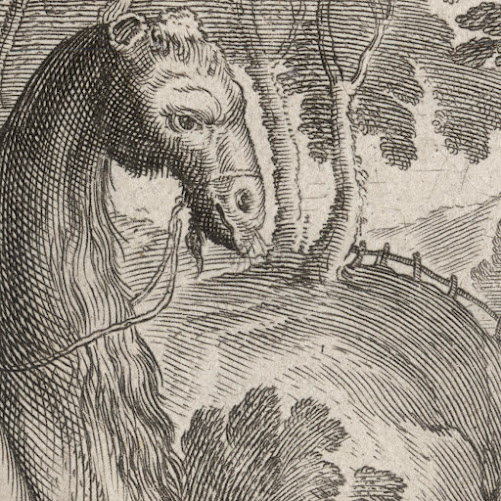Lucien
Marcelin Gautier (1850–1925)
“Les Chantiers
du Pharo, à Marseille” (Pharo Construction Sites in Marseille), 1883, from the
series of fifteen etchings, “Vues de Marseille” (Beraldi 17–31), printed by François
Liénard (fl.c. 1860s–1880s) and published in Paris in the periodical, “L’Art”.
Etching on laid
paper (Ingres d’Arches with the “MBM” watermark) with small margins.
Size: (sheet) 29.5
x 42.9 cm; (approx./soft platemark) 21.7? x 38.6? cm; (image borderline) 19.8 x
37.3 cm.
Lettered in
plate below the image borderline: (left) “L’Art.”; (centre) “Lucien Gautier,
del. et sculp./ LES CHANTIERS DU PHARO, À MARSEILLE.”; (right) “F. Liénard,
Imp.”
Beraldi 1887 28
(Henri Beraldi 1887, “Les graveurs du 19e siècle; guide de l'amateur d'estampes
modernes”, vol. 6, Paris, L Conquet, p. 251, cat. no. 28).
Condition: a
richly inked, near faultless impression in almost pristine condition with no
tears, holes, folds, abrasions, stains, foxing or signs of handling.
I am selling
this magnificent and large etching showing ship-building in the port of Marseille
in the quarter of the city known as Pharo—note the gleaming white limestone Phare
de Sainte Marie lighthouse in the distance that had been opened only 28 years before
Gautier made this etching, but is now inactive—for AU$253 in total (currently
US$185.91/EUR156.61/GBP133.68 at the time of posting this listing) including
postage and handling to anywhere in the world (but not, of course, any import
duties/taxes imposed by some countries).
If you are
interested in purchasing this very revealing view of wooden ship construction in the late nineteenth century, please contact me (oz_jim@printsandprinciples.com) and
I will send you a PayPal invoice to make the payment easy.
This print has been sold





















































